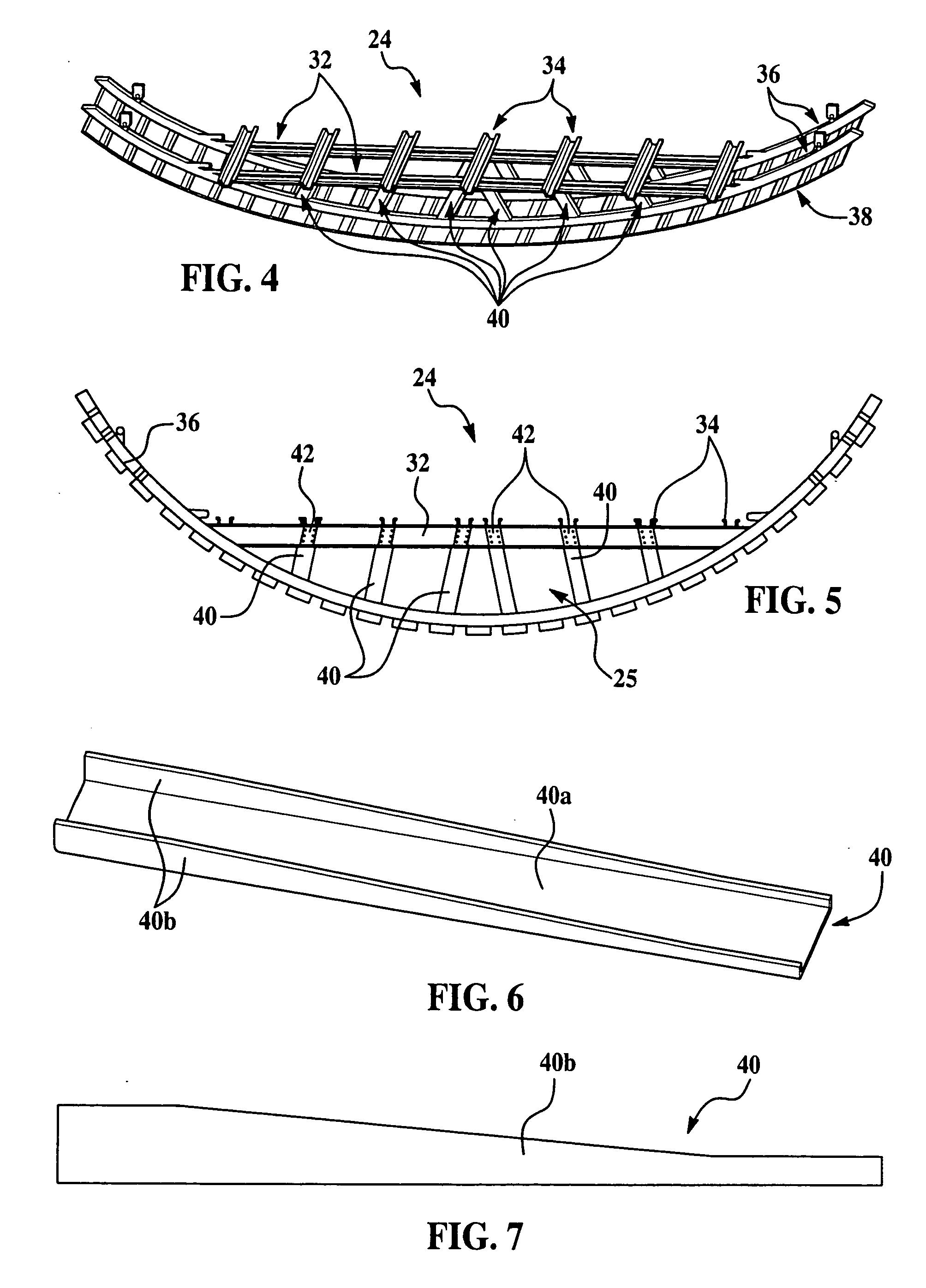Energy absorbing structure for aircraft
a technology of energy absorption and aircraft, applied in the direction of fuselage, aircraft accessories, fuselage frames, etc., can solve the problems of aircraft structural integrity loss, composite materials that are used in design challenges, crash injuries, etc., to promote elastic stability during crushing, reduce the compression strength of the member, and reinforce the structural member
- Summary
- Abstract
- Description
- Claims
- Application Information
AI Technical Summary
Benefits of technology
Problems solved by technology
Method used
Image
Examples
Embodiment Construction
[0033]Referring first to FIG. 1, an aircraft generally indicated by the numeral 20 has a cylindrical fuselage 21 defining an interior space that is separated into upper and lower lobes by a floor 23. The upper lobe includes a passenger compartment 22 while the lower lobe contains a cargo area 24. A volume of space below the cargo area 24 is normally available to contain energy absorption structure and constitutes the part of the aircraft 20 that is first to impact the ground in the event of a wheels up landing. The left side of the aircraft 20 shown in FIG. 1 depicts the condition of the cargo area 24 before impact, while the right side of FIG. 1 shows the aircraft having impacted the ground during a crash, producing a crush area 25 where part of the fuselage 21 and internal support structure collapse. To improve crashworthiness, it is desirable that the structure within the crush area 25 crushes in a stable manner in order to provide the required energy absorption while maintaining...
PUM
 Login to View More
Login to View More Abstract
Description
Claims
Application Information
 Login to View More
Login to View More - R&D
- Intellectual Property
- Life Sciences
- Materials
- Tech Scout
- Unparalleled Data Quality
- Higher Quality Content
- 60% Fewer Hallucinations
Browse by: Latest US Patents, China's latest patents, Technical Efficacy Thesaurus, Application Domain, Technology Topic, Popular Technical Reports.
© 2025 PatSnap. All rights reserved.Legal|Privacy policy|Modern Slavery Act Transparency Statement|Sitemap|About US| Contact US: help@patsnap.com



